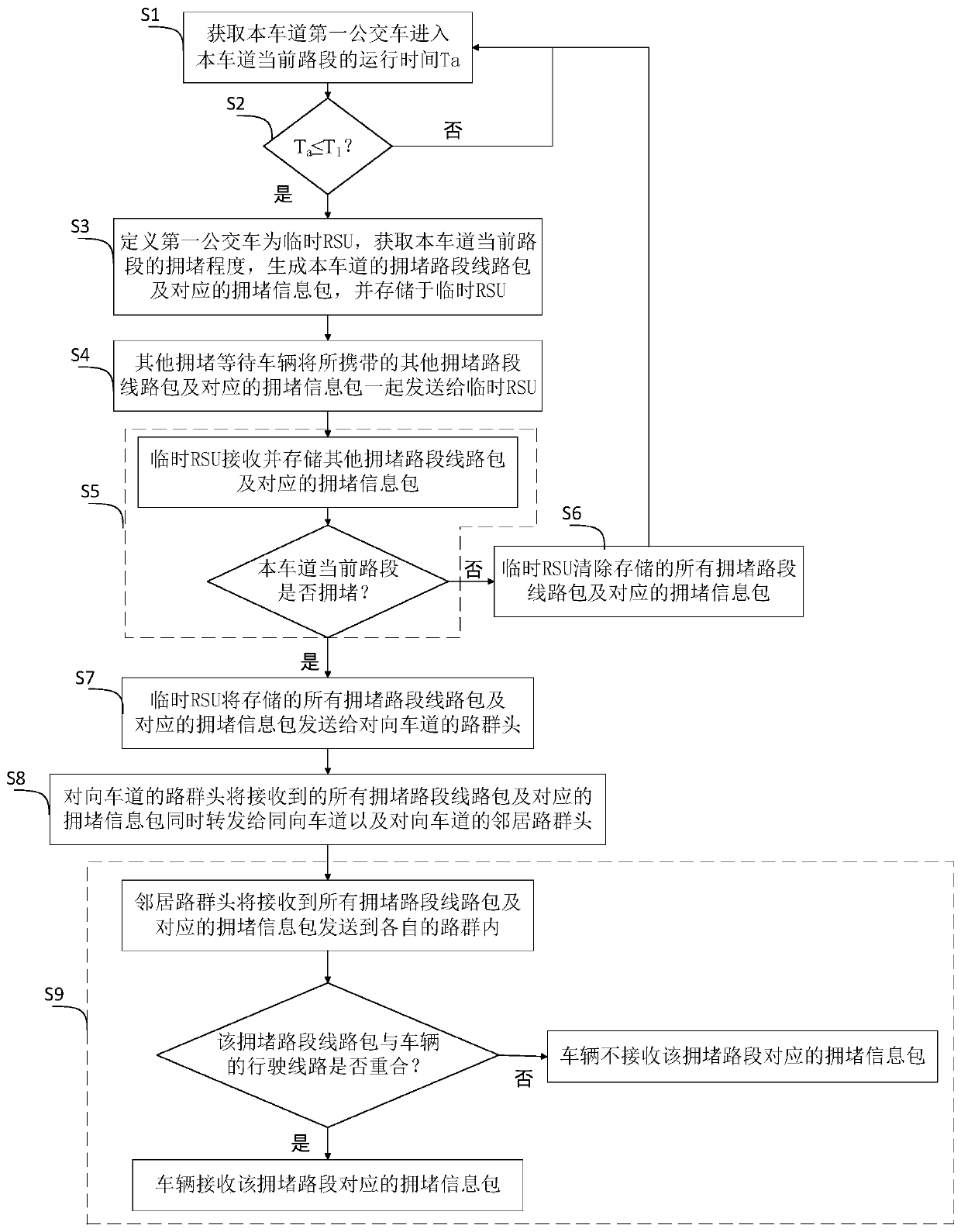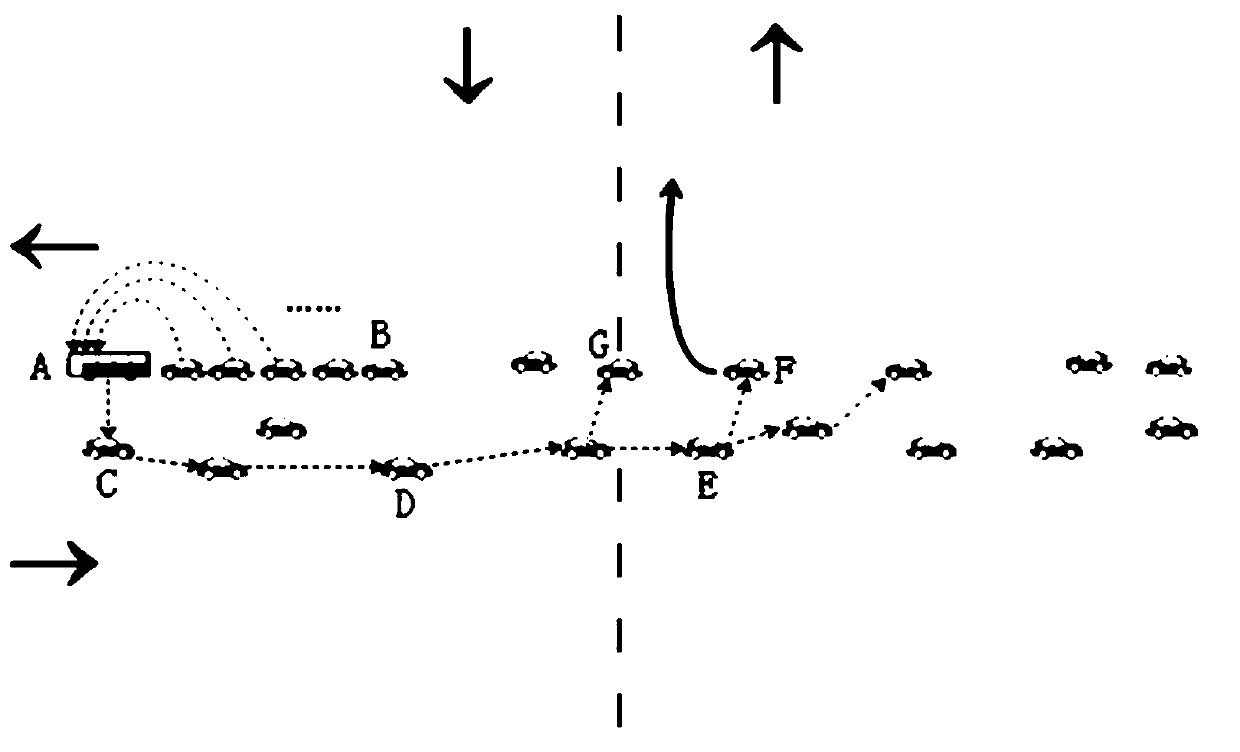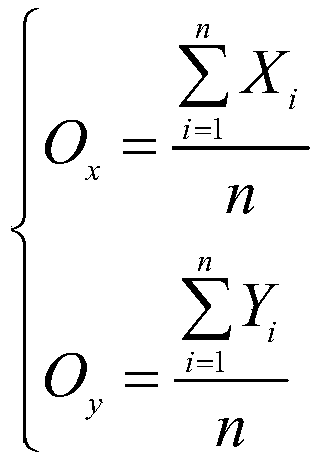VANETs-based bidirectional lane congestion detection and information forwarding method
A technology for information forwarding and congestion information, applied in the field of intelligent transportation, can solve the problems of delayed update of road information, inability to modify the route in time, and high network transmission cost, so as to improve reliability and real-time performance, reduce information transmission costs, and avoid occupying channels. The effect of resources
- Summary
- Abstract
- Description
- Claims
- Application Information
AI Technical Summary
Problems solved by technology
Method used
Image
Examples
Embodiment Construction
[0041] The present invention will be described in detail below with reference to the drawings and specific embodiments.
[0042] Such as figure 1 As shown, a two-way lane congestion detection and information forwarding method based on VANETs includes the following steps:
[0043] S1. Obtain the operating data of the first bus in the current road section of the lane, that is, the operating time of the first bus entering the current section of the lane;
[0044] S2. Determine whether the current section of the lane is congested according to the operating data of the first bus in the lane. If it is determined that the current section of the lane is congested, perform step S3, otherwise return to step S1;
[0045] S3. Define the first bus as a temporary RSU, obtain the congestion level of the current section of the lane, generate the congested section line package of the lane and the corresponding congestion information package, and store it in the temporary RSU;
[0046] S4. Other congest...
PUM
 Login to View More
Login to View More Abstract
Description
Claims
Application Information
 Login to View More
Login to View More - R&D
- Intellectual Property
- Life Sciences
- Materials
- Tech Scout
- Unparalleled Data Quality
- Higher Quality Content
- 60% Fewer Hallucinations
Browse by: Latest US Patents, China's latest patents, Technical Efficacy Thesaurus, Application Domain, Technology Topic, Popular Technical Reports.
© 2025 PatSnap. All rights reserved.Legal|Privacy policy|Modern Slavery Act Transparency Statement|Sitemap|About US| Contact US: help@patsnap.com



